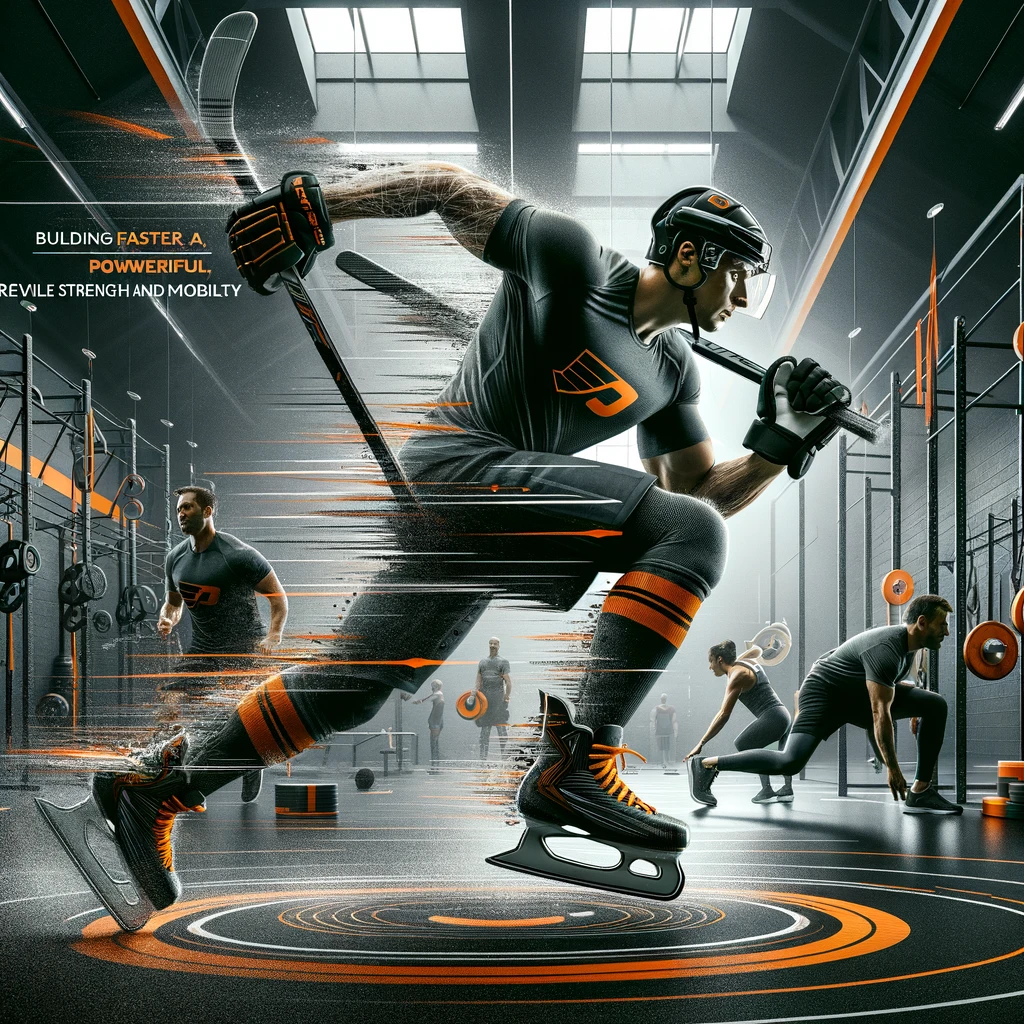By: Coach K-Mac
Ice hockey is a sport that demands speed, power, and agility, making it essential for players to continuously evolve and improve their physical abilities. While many young athletes focus solely on perfecting their skating stride & technique, it’s crucial to understand that technique is intrinsically linked to two key factors: relative strength and mobility. In this blog post, we’ll explore the importance of these elements in American youth ice hockey development and how they can be cultivated through a balanced strength and conditioning program like Hardbody Athlete in Plain City Ohio.
The Interdependence of Hockey Stride Technique, Relative Strength, and Mobility
- Skating Striding Efficiency: Skating is the foundation of ice hockey, and efficient stride mechanics are paramount. Technique alone cannot overcome physical limitations. By improving relative strength and mobility, players can optimize their stride mechanics, allowing for smoother, more powerful skating.
- Explosiveness: The ability to generate quick bursts of speed and power is essential in hockey. Strength and mobility play a vital role in enabling players to explode off the starting line, make rapid direction changes, and accelerate faster during a game.
Developing Relative Strength and Mobility in the Weight Room
- Strength Training: A well-structured strength training program is crucial for young ice hockey players. Exercises like squats, deadlifts, and plyometrics can improve lower body strength and explosiveness. Strength is the foundation upon which power is built.
- Mobility Work: Incorporating mobility exercises into your training routine helps enhance flexibility and range of motion. This allows players to achieve deeper knee bends and generate more power in their strides while also reducing the risk of injury.
Prioritizing Long-Term Athletic Development
- Consistency: Youth athletes should prioritize long-term athletic development over short-term gains. Consistency in strength and conditioning is key to building a strong foundation and maximizing genetic potential.
- Nutrition: Fueling the body correctly is essential for growth and recovery. Players should maintain dialed-in nutrition habits to ensure they have the energy to perform and recover effectively.
Building Strength and Power
- Muscle Growth: Building muscle through proper strength training not only increases strength but also contributes to power. Power is the product of strength and speed, and gaining muscle mass enhances an athlete’s potential to generate explosive force.
- Power Development: Power exercises like box jumps, medicine ball throws, and sled pushes can further enhance an athlete’s ability to translate strength into speed on the ice.
Understanding Ice Hockey Stride
Ice hockey stride can be simplified as the product of stride length and stride frequency. Developing relative strength and mobility positively impacts both these aspects. Increased strength improves stride length, allowing players to cover more ice with each stride. Enhanced mobility allows for a smoother and more frequent stride frequency, increasing overall skating efficiency.
Conclusion
In the world of American youth ice hockey development, recognizing the importance of relative strength and mobility is paramount. These elements not only contribute to enhanced skating technique but also build faster, more powerful skaters. A balanced approach that includes strength training, mobility work, and a focus on long-term athletic development can empower young athletes to reach their full potential on the ice. By prioritizing physical development, maintaining proper nutrition, and understanding the fundamentals of ice hockey stride, players can propel themselves toward success in the sport. Ultimately, building strength, gaining power, and honing technique go hand in hand, creating a winning formula for aspiring ice hockey stars.

